Visiting Letna Park in Prague (2025) + Ultimate Guide & History
Letna Park is one of the really cool parks to visit in Prague. You can stretch your legs or sit and read a book on the park’s many benches and have a coffee or a beer with amazing views of Prague.
There are also a lot of interesting places in the park itself and close by, including the Technical and Agricultural musem on one side and Prague castle on the other. You can easily spend the best part of the day here!
Why visit Letna Park
- Great views of Prague
- Perfect for a longer walk (in the shade)

Letna Park Location
Letna is a large park on the top of Letna Hill straight above the Vltava River on one side and Bubenec Town Area and Stromovka Park on the other.
History of the Letna park
Like many parks of Prague, Letna Park was originally just fields, vineyards and woodland. Because of its strategic position, it was also used by the military camps from the Middle Ages. Its current history doesn’t really start until the end of the 19th century, when the Letna houses started to be built and the nearby hill began to be used as a recreation ground.
MORE PRAGUE PARKS
- Kinsky Park (Smichov – Prague 5) >>
- Grebovka Park (Vinohrady, Prague 2) >>
- Pruhonice Park (outside centre of Prague) >>
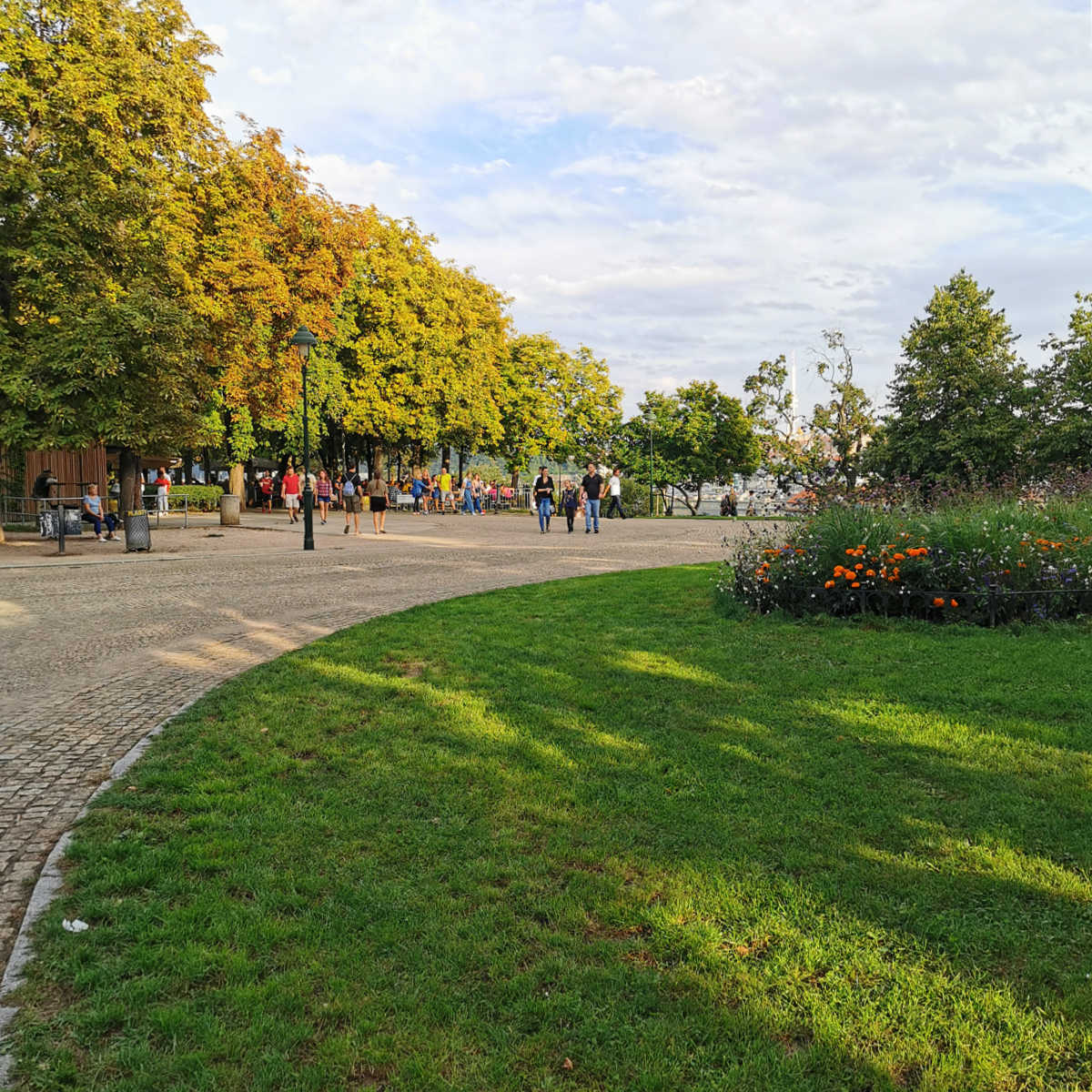
How to get to Letna park
There are plenty of access points where you can start your Letna Park walk. I often take a tram no 12 to the top of the hill and then walk to the park from the Technical Museum side.
If you fancy a bit of a climb, you can walk up from the Cechuv Bridge side, which takes you to the middle of the park, where a huge, imposing statue of Stalin used to stand, until it was demolished in 1962. The statue pedestal is still there, but the statue was replaced with a large pendulum.
Trams
1, 8, 12, 25, 26 to Letenske Namesti stop and then walk towards the Technical or Farming Museum. This will take you to the Beer Garden area of Letna Park
5, 12, 18, 20 to Chotkovy Sady (Chotkov’s Parks) and then walk towards the Letna Park. This way, you’ll start your walk from the Hanau Chateau.
17, 24 to Dukelskych Hrdinu or Sttrossmayerovo Square and then walk to Skalecka Street to start the walk from the 1951 Expo Pavilion.
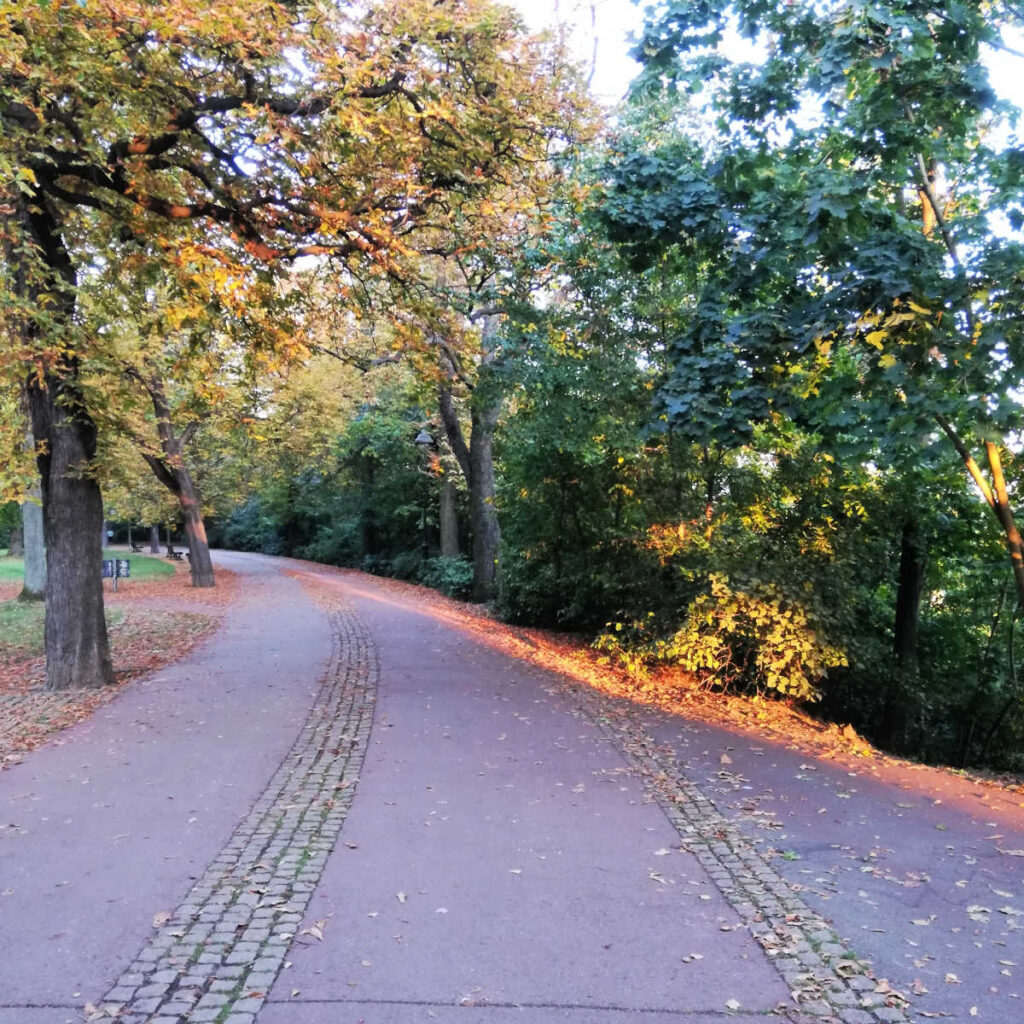
What to see at Letna Park
While you can enter this park from any area you like, I prefer to start my walk from the Technical Museum or from the Skalecka Ulice park entrance. This way I end my walk close to Chotkovy Park and can either continue to the Prague Castle Area or take a short tram ride back to Prague centre.

Restaurant Praha – Brussels Pavilion
If you miss the little notice about this building, you might be forgiven for thinking that this is just some modern office building. If it looks modern and sleek now at the beginning of 21th century, can you imagine how modern it looked in 1958 ?
This modern building was originally part of the Czech pavilion built for the Brusells Expo in 1958 and it was designed by architects Josef Hruby, Frantisek. Cubr and Zdenek. Pokorny.
It was built mainly from steel to give the building its shape and glass panels. Despite its size (it is quite big) it was designed so that it can be put together and then dismantled and re-built somewhere else.
And in case you are thinking that this building is not remarkable enough, it won the Grand Price for the best pavilion at the Expo 1958.
After the Expo 1958 the pavilion building was re-built in the exhibition grounds (Veletrzni Palac) near Stromovka.
What you see in front of you on the edge of Letna Park is the restaurant part of the pavilion, which was used as an actual restaurant between 1960-1990.
Unfortunately, in 1991 the building caught fire and the original interior was destroyed and much of the building was damaged.
The first part of a very expensive reconstruction was completed by 2001, but the last time I walked around in 2021, building work was still underway, although the inside looks bright and nearly finished.
The restaurant building is now privately owned and I’m not sure how the new owners intend to use it in the future.

Letna Chateau
This chateau was built in 1863 and it’s designed in a neo-Renaissance style by architect Ignac Vojtech Ullmann.
It stands the grounds of a previous palace called Belvedere which belonged to the Count Franz Wallenstein (Valdstejn) and was originally built in 1715. The Belvedere chateau history was shortlived as in 1742 the building was destroyed by French soldiers leaving Prague after a battle loss.

First Prague Tramline (the site of)
In July 1891 the first ever electric tramline arrived at Letna Chateau, making the Chateau the line’s last stop. The tram line started in Exposition Grounds of Stromovka and then in 1893 was extended to Belvedere Chateau in Prague Castle.
Since it was originally built to take visitors to the Exhibition Grounds for the big exhibition in 1891, demand started to dwindle as the exhibition year finished towards the end of 1891.
The line was originally only about 766 metres long and was built as a single line with two trams, a passing place and a maximum speed limit of 10 km per hour. The journey from Letna to the exhibition ground took 4 1/2 minutes.
Krizik tried to save the line by extending it to the little chateau (Mistodrzitelsky Letohradek) in the Stromovka park, which nearly doubled the length of the tramline.
In 1900 Prague town hall decided to take over the running of the tramlines and didn’t allow Krizik to expand his tramline further.
In the same year, the town took over the Letna Cable car, but didn’t want to purchase Krizik’s tramline, since by then it wasn’t making much money. The last tram ride on the first Czech tramline was on 15 August 1900 and by 1904 all tram line machinery and tracks had been removed.

Letna Cable Car (the site of)
As you walk towards the edge of the beer garden in front of the Letna Chateau, you will see what looks like steps down the hill. This is the site of the first ever cable car in Prague (and in the whole Czech Republic), which was built in 1891 to celebrate the Czech Jubilee Exposition.
The cable car was originally powered by water, but later converted to electric power as it turned out that the water wasn’t sufficient enough. The electrification was done by the famous Czech engineer Frantisek Krizik in 1903 and it was a great success considering that the height of the hill (38 metres) was achieved by a 109 metres long rail line. To put it simply, it was very, very steep climb!
Sadly the cable car was removed in 1922, but you can have the same view of Prague from the same spot where the passengers would have disembarked from the cable car and started their leisurely walk around Letna Park.
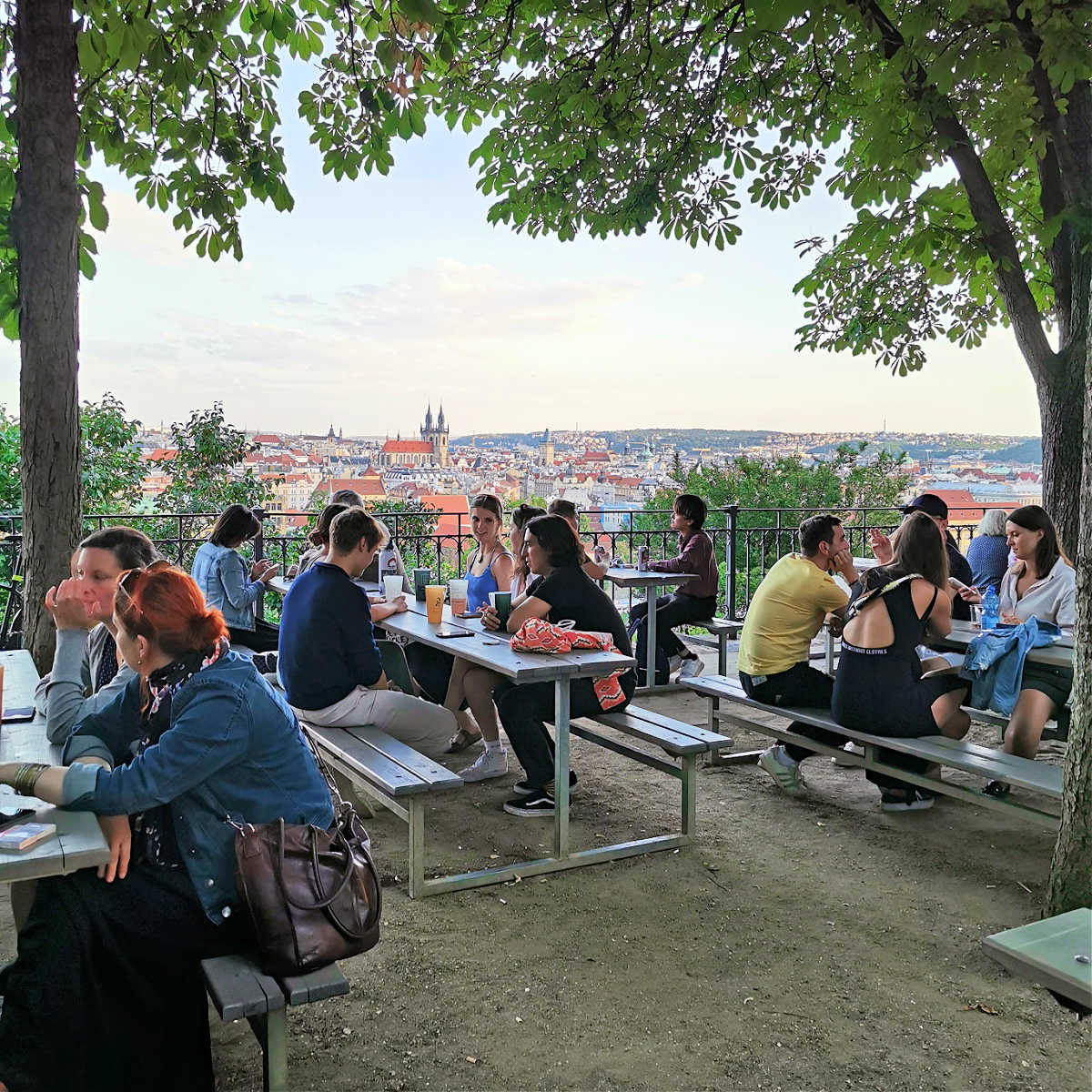
Letna Beer Garden
This place is great to visit towards the end of the day as you can watch the sunlight filling the trees, drink some good beer, cider or the Czech version of Coca-cola – Kofola and view Prague from the top of the hill.
The Letensky Chateau serves food and drink and there is also a little serving hut where you can get drinks and snacks, like traditional sausage in a roll (parek v rohliku).
READ MORE
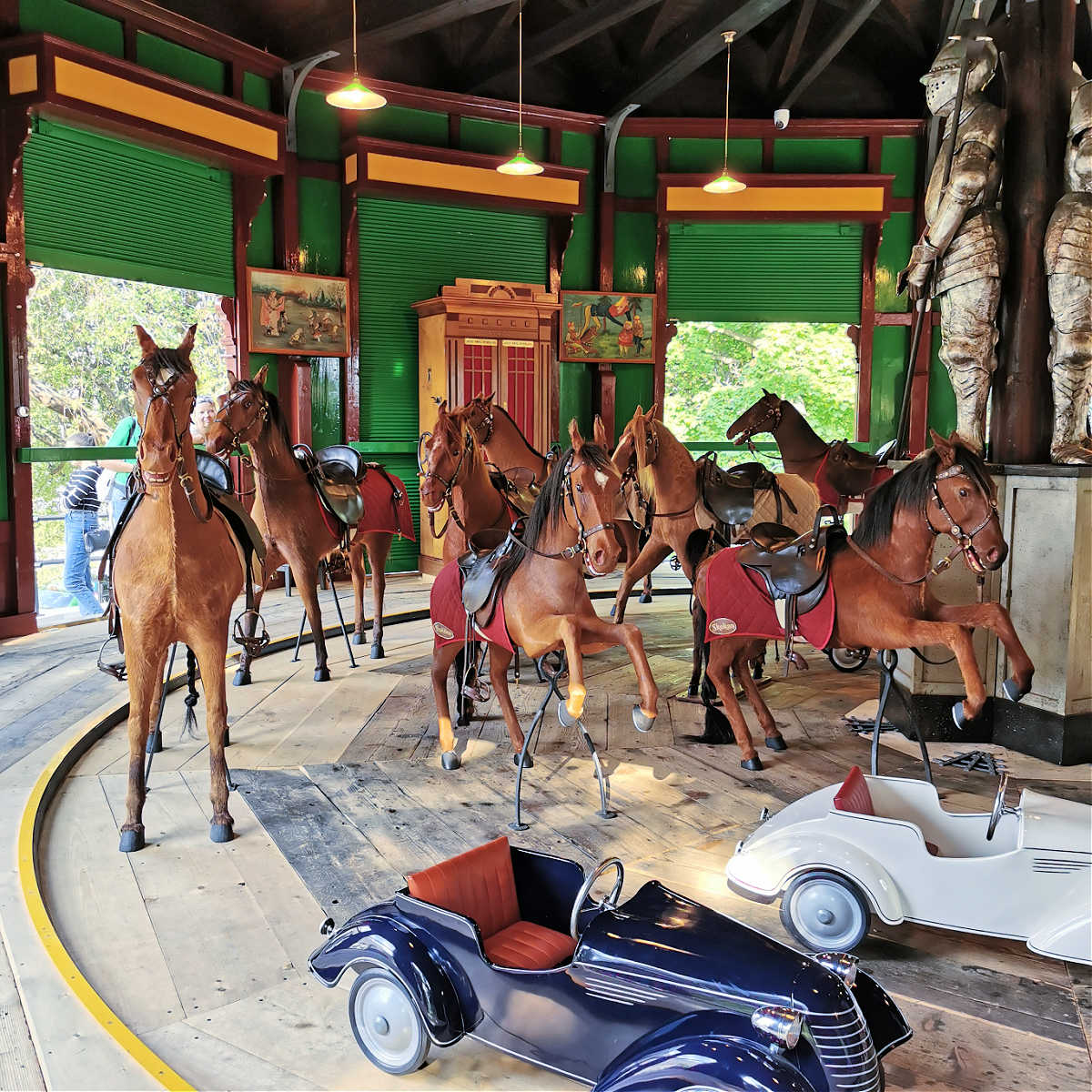
Letna Park Carousel
If you walk to Letna Park through the streets from the National Technical museum, you will see a boarded up round area, which covers the Europe’s oldest carousel, which was originally built in 1892.
For a long time (since 2004), it’s been out of action and has recently undergone a long and expensive restoration. Finally, it was re-open in July 2022 and you can (again) ride the horses on this amazing carousel.
I remember as a child my mum would take me for a walk in Letna Park and we would end up at the Carousel. I was always mesmerised by the colours, shiny lights and mirrors. My mum remembered that when I was about 3-5 years old the carousel was still working and I went on it several times.
The horses were originally made with real horse skin and hair, because they wanted to make them as realistic as possible. It was 1892, after all!
I do remember that every time we went my mum would buy me something from the stall in front of the carousel, which was run by the same family. It was usually a colourful paper ball on a string, which you could bounce up and down and catch it at the same time.
For some reason, I remember that it cost 2 Kc and I once opened it to find out what it was made of only to realise that it was stuffed with newspaper. I’ve never seen anything like this in any toy shop and mum must have told me that the carousel people made it themselves.
I guess that was my first glimpse into how entrepreneurship can work although it was the 1980s and nobody was able to officially have their own business. As a child, I thought that was pretty awesome and I remember that I wanted to grow up doing something similar like this (like to make and sell things you can make yourself).

Prague Metronome
No matter what path you’ll take the middle of the Letna Park will always take you to the Prague Metronome, which moves side to side and counts the time. It replaced a huge statue of Stalin and row of workers, farming woman, soldier, which was placed there in 1955 to celebrate, then, the ‘wonderful bond’ with Russia.
The statue was to commemorate ‘love and friendship’ for the Soviet Union and if you want to know more you can watch this short documentary about the building of the statue. It’s in Czech, but it shows you the building process and you’ll see the Letna Hill before and after the statue was placed there.
The whole statue was so big that they had to support it with a large base. The sad part of our history was that it was largely built using labour from political prisons. The documentary mentions that the ‘workers worked voluntarily in three day shifts (meaning round the clock) and promised to finish the statue in record time.
The statue was 15 metres tall, weighed a massive 17,000 tonnes and cost the Czech Republic over 140 million crowns but fortunately, didn’t last very long. It was demolished in 1962 and the plinth remained empty until 1991 when the metronome structure replaced it.
To understand the enormity of the statue and then the significance of it, just look at the sides of the plinth. On both sides you will see what looks like a large bowl, which carried an everlasting flame, which was lid by each side of the statue. Scary or what…
Nowadays, you will find most of the plinth covered in graffiti and local youngsters use the top of the flat area as a skate park.

Hanau Pavilion
I’ve always seen this pavilion from the distance until I had the opportunity to visit this year. It’s a lovely little pavilion (no bigger than a large house) build to celebrate the Czech Jubilee Exposition in 1891.
It doesn’t look it, but it’s constructed only in cast iron in a decorative Baroque style. It was built by the prince of Hanau, who wanted to showcase his ironworks in Komarov (near his Horovice Chateau in West Bohemia).
The Komarov ironworks were at the time the largest ironworks in the Bohemia. The pavilion was designed by architect Otto Heiser, the decorative elements made by Zdenek Fiala from sketches by Josef Hercik.
The pavilion was part of the exhibition and after the exhibition finished, Prince of Hanau donated the pavilion to the Prague town and the building was moved to the top of the hill, where you can see it now.
The Hanau Pavilion is now used as a restaurant, where you can taste local food and drink. Last time I’ve checked, it looked fairly casual for dining and the prices looked reasonable (for Prague, anyway…).
PIN THIS GUIDE FOR LATER
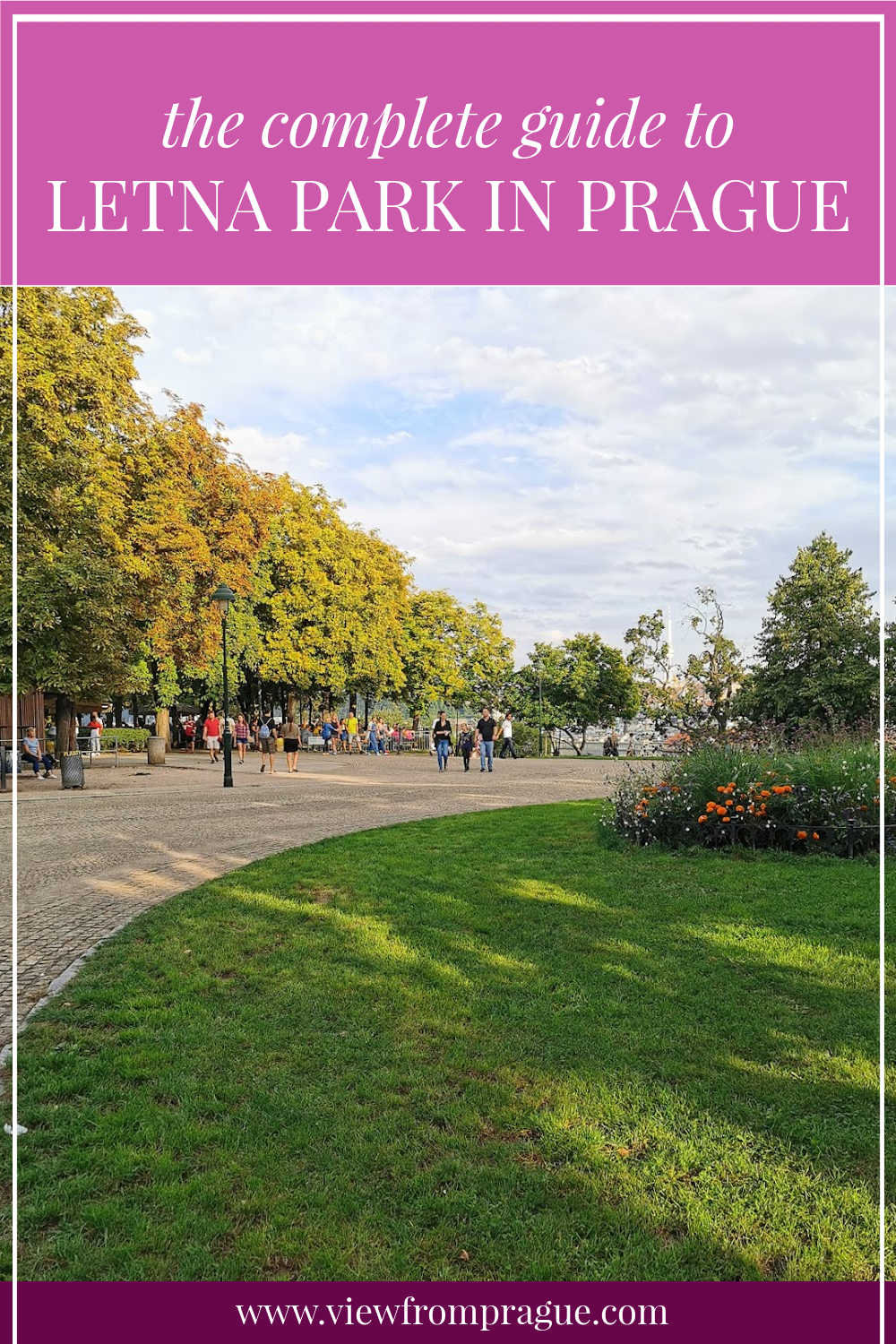
This blog post was originally written on 10 October 2021 and last updated on 10 October 2021






